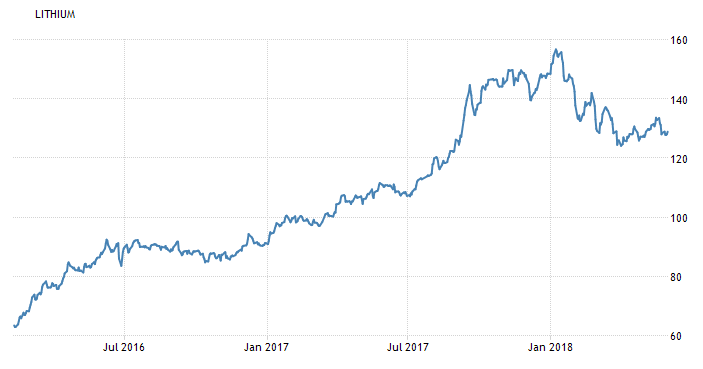When I was a kid, electric vehicles were a part of some futuristic urban landscape in my imagination. There were giant skyscrapers gleaming white over a verdant city that was cut in the center by a monorail, with drivers passing silently by a clean, blue river… perhaps under an enormous glass dome… perhaps on another planet.
You might have had similar thoughts about electric vehicles, too. But take a look around: Electric vehicles are now a reality. They’re everywhere. (No glass domes yet.)
Every major automaker in the world has already begun mass production of electric vehicles. Some are now planning to completely shift production toward EVs.
What was once a dream for many has now become a reality. But with that reality comes real demand. And the demand for the raw materials required for EV production has skyrocketed — so much so that some believe a shortage caused by this surging demand could actually limit planned global production over the coming years.
As a result, the prices for these raw materials required for EV production have soared. And of course, I’m mainly talking about lithium.
Lithium prices have fallen YTD. But over the past two years, the price of lithium has still more than doubled.

For some investors, the lithium boom has been the most profitable event of their lives. But it hasn’t been easy.
See, up until a few years ago, there were only a handful of lithium-focused equities for investors to choose from, even though electric vehicles were becoming a reality. There was no ETF or other major lithium-focused fund. It simply wasn’t easy for investors to get good exposure to lithium.
Today, there are a lot more lithium investments to choose from. But there’s still one major thing investors can’t really do: own physical lithium.
Now, it’s true that there are many websites that do sell physical lithium. You could theoretically buy as much physical lithium as they’ll sell you. But buying physical lithium is a very poor investment simply due to liquidity — you’re not going to easily find someone to buy your physical lithium.
And right now, there are no physically backed lithium ETFs. Current lithium ETFs are composed of producers, developers, and explorers of the mineral.
So there’s no great way to invest directly in physical lithium. But that’s about to change…
Our analysts have traveled the world over, dedicated to finding the best and most profitable investments in the global energy markets. All you have to do to join our Energy and Capital investment community is sign up for the daily newsletter below.
The London Metal Exchange (LME), the world’s largest metals exchange, will begin to offer new futures contracts for metals used in EV batteries within 18 months. These metals include lithium, manganese, and graphite.
The LME also said additional contracts for already tradable EV metals such as nickel, copper, cobalt, and aluminum will be explored.
This is big news for lithium and the other metals.
Right now, lithium isn’t traded on any futures exchange. This cuts out one of the main ways institutional investors gain exposure to a commodity. But with the addition of lithium futures and swaps, these institutional investors can enter the market.
It’s likely that the addition of lithium futures will also lead to new lithium ETFs. As I mentioned, current lithium ETFs are composed of producers, developers, and explorers. But it’s likely one or more fund managers will use the new LME lithium futures to create a new physically backed lithium ETF.
Overall, the addition of lithium futures should be great for the market, even if it’s a bit overdue. And with the current slump in lithium prices, now is probably a great time to invest.
Until next time,
Luke Burgess
As an editor at Energy and Capital, Luke’s analysis and market research reach hundreds of thousands of investors every day. Luke is also a contributing editor of Angel Publishing’s Bull and Bust Report newsletter. There, he helps investors in leveraging the future supply-demand imbalance that he believes could be key to a cyclical upswing in the hard asset markets. For more on Luke, go to his editor’s page.

